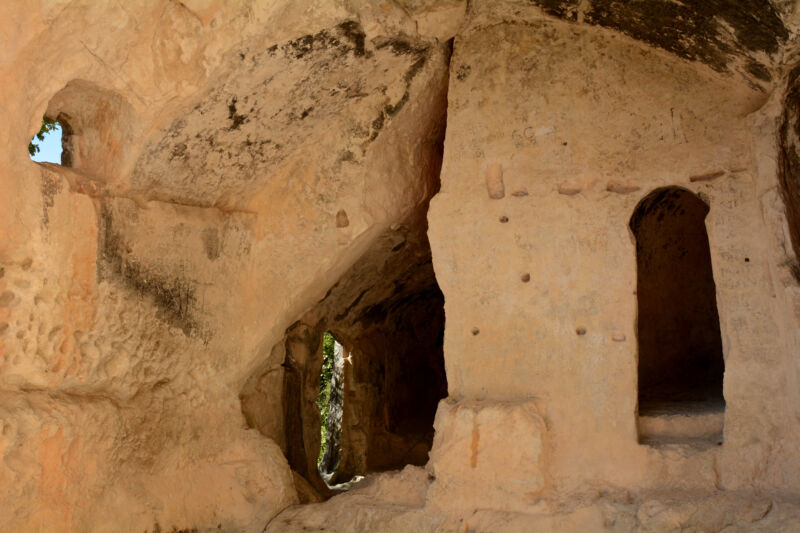
Enlarge / View of the Las Gobas cave site.
In a new study, we have sequenced DNA from a Christian community in medieval Spain that lived in artificial caves carved into a rocky outcrop.
This is one of several medieval cave communities known to have lived on the Iberian Peninsula—which includes both Portugal and Spain. Why these groups favored caves over more conventional village dwellings is a subject of longstanding debate for archaeologists. While it may be tempting to speculate about hermits or religious groups, there’s scant evidence to support such theories.
Our study, published in Science Advances, explores the possibilities, adding genetic analysis to what we know about the physical remains of people from the site’s cemetery. DNA was able to shed light on the ancestry of this community, their relationships to each other and the diseases that afflicted them.
The combined information reveals a story of inbreeding, occasional bouts of violence, and disease during a fascinating period in history. One possibility is that some of the earliest settlers were people with military experience, though it’s unclear whether they were professional soldiers or not.
The settlement existed from the mid-sixth century to the 11th century CE. The early Middle Ages was a dynamic and tumultuous era in many parts of Europe, including the Iberian Peninsula. After the fall of the western Roman Empire in 476 CE, Iberia came under the rule of the Visigoths, who came from northern Europe.
The Visigothic kingdom collapsed following a conquest by Muslim armies crossing from North Africa in 711 CE. This event established a territory known as Al-Andalus, which, at its greatest extent, covered much of Iberia. But Christian kingdoms persisted in the north of the peninsula and gradually reclaimed territory.
What we know about the period in this part of the world has been dominated by events in Iberia’s major cities at the time, such as Toledo, Granada, and Cordoba. These were hubs of trade, diplomacy, and power.
The rural site of Las Gobas offers a glimpse into life away from these urban centers, in one of the distinctive cave-dwelling communities known from this period.
Located in Burgos province, northern Spain, near the village of Laño, Las Gobas features a cemetery that was used continuously from the seventh to the 11th century. It was initially connected to a church, also built within the cave complex. By the 10th century, the inhabitants had moved to a more typical rural village, though the cave church and cemetery remained in use until the 11th century.
Archaeological excavations at the cemetery have uncovered the remains of 41 people. We subjected 39 of them to genetic analysis, and 33 provided enough DNA for sex identification (22 males and 11 females). Some 28 remains yielded enough DNA for further investigation with a variety of genetic techniques.